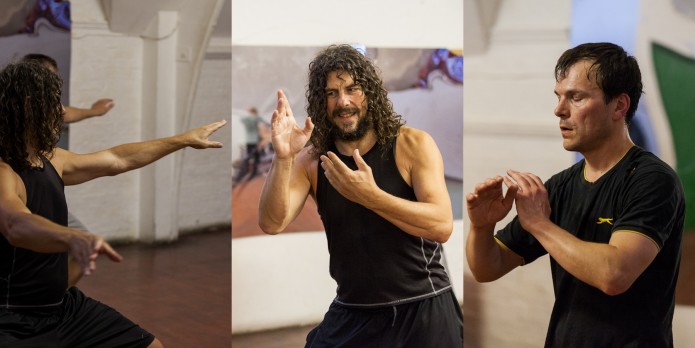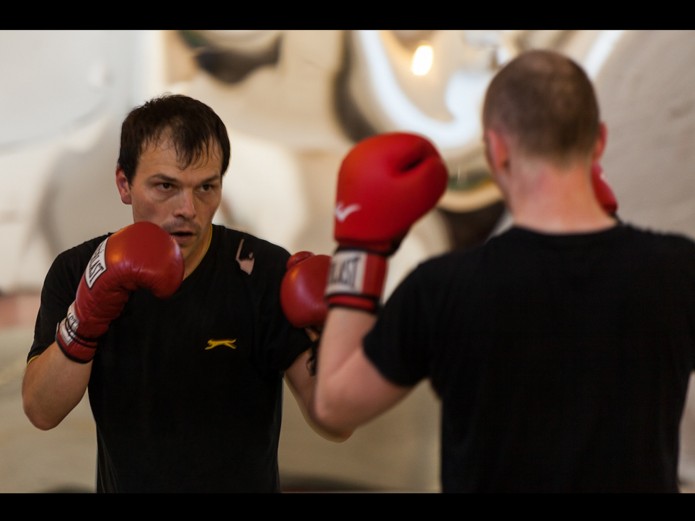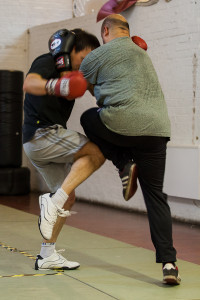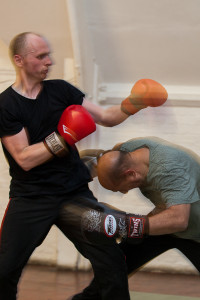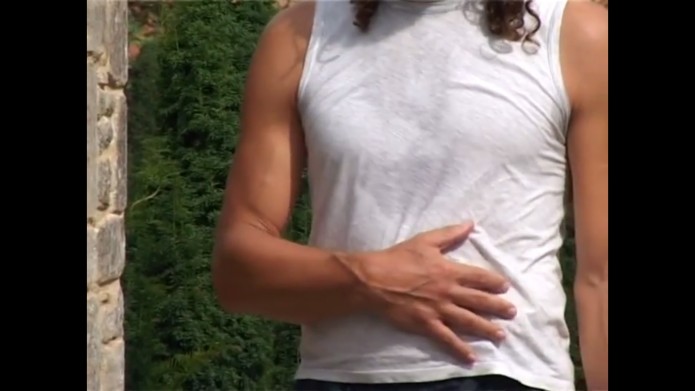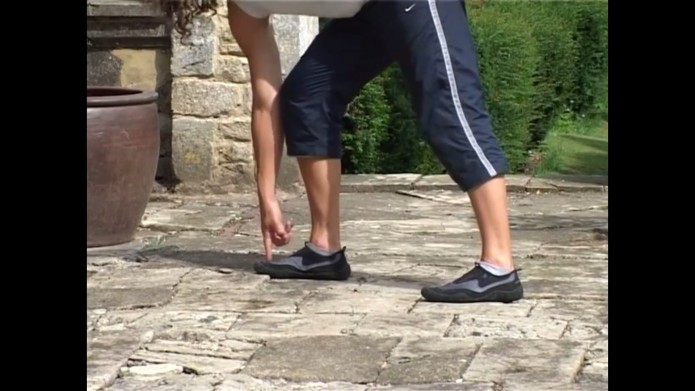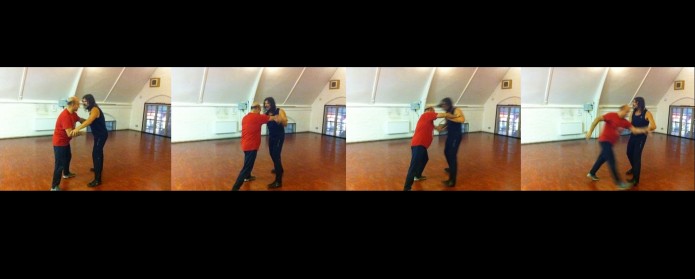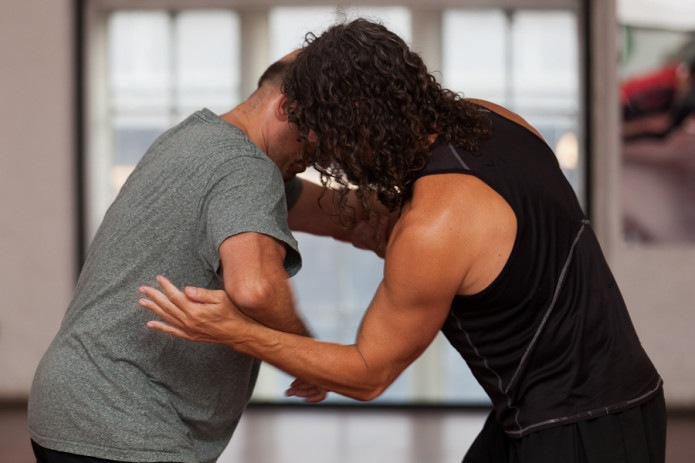This series of photographs shows Chris (red) initiating right and left pushes with the intent of unbalancing his opponent.
Dave (black), listening for changes in his opponent’s movement detects Chris’s intent, absorbing the right push with a solidly structured stance and redirecting the left push using softness and flexibility, guiding Chris’s force into “the void” (i.e. unbalancing the attacker).
Principles of Yin and Yang
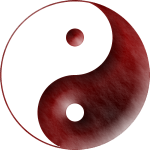
In Taoist philosophy, the yin and yang symbol represents the two forces which pervades everything in the universe.
In the martial art tai chi chuan, the principles of yin and yang are used to attack and defend. Attacking is yang. A tai chi player aims to counteract an attackers yang by using yin to absorb and defuse it. The yang force is not met and blocked, yang is not used against yang. Instead the force of the attack is diverted away from the body with the minimum of force. Once an attackers yang has been nullified, he or she is unbalanced and yang can be used in a counter-attack.
Educated force, force with technique, stemming from an understanding of yin and yang, is essential to tai chi. The ability to switch between effective yin and yang quickly requires suppleness, agility and speed.
The Tai Chi Hand Form consists of a series of movements in which yin and yang interchange. It develops awareness of the way yin and yang can be used in self-defence and of the way your body works naturally, so you do not have to practise martial tai chi in order to benefit from the hand form. The motions give you the suppleness and fitness you require, increasing health and vitality.
Tai Chi is an internal martial art, it is the way your body works . You need to become aware of your body and the way it moves, and achieve balance of yin and yang yourself. This is good for body and mind, since they are relaxed and in harmony.
